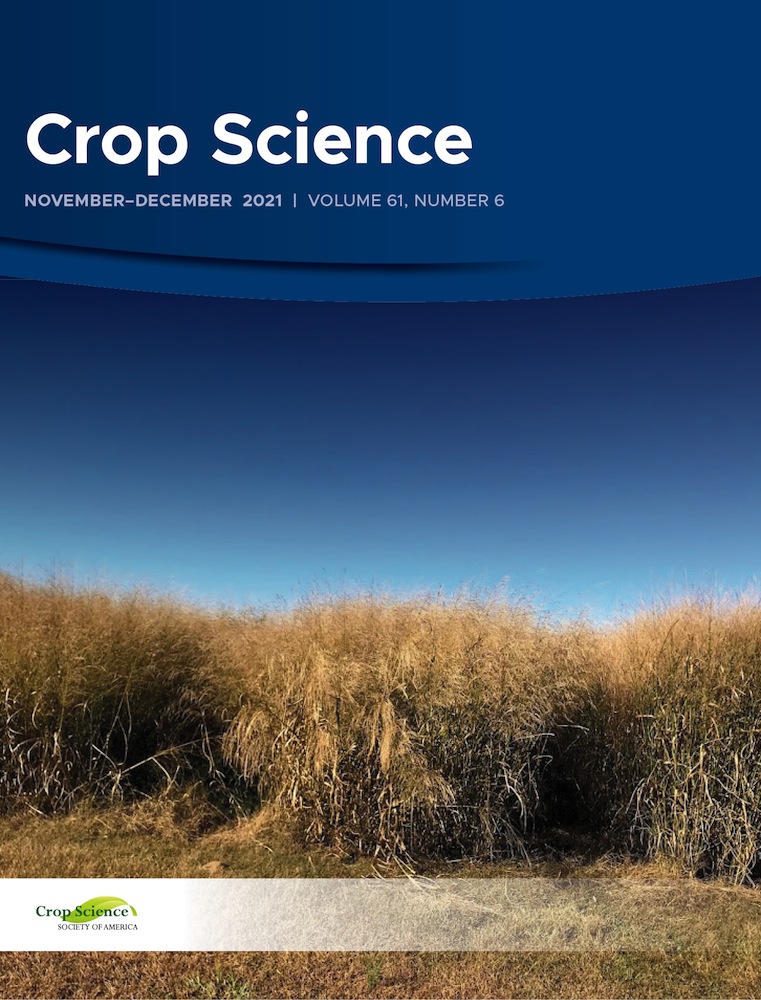Ver ítem
- xmlui.general.dspace_homeCentros Regionales y EEAsCentro Regional Mendoza - San JuanEEA La ConsultaArtículos científicosxmlui.ArtifactBrowser.ItemViewer.trail
- Inicio
- Centros Regionales y EEAs
- Centro Regional Mendoza - San Juan
- EEA La Consulta
- Artículos científicos
- Ver ítem
Plant dry weight and nutritive value of genetically diverse germplasm of false Rhodes grass [Leptochloa crinita (Lag.) P.M. Peterson and N.W. Snow], a native forage grass from arid regions of the Americas
Resumen
The native forage, false Rhodes grass [Leptochloa crinita (Lag.) P.M. Peterson and N.W. Snow], represents an important component of the arid and semi-arid rangelands of the Americas, due to its large area of distribution and its tolerance to drought and cattle grazing. Precise information on its nutritive value and the factors that influence this trait is relevant for its effective utilization as a forage in arid regions of the world where revegetation
[ver mas...]
The native forage, false Rhodes grass [Leptochloa crinita (Lag.) P.M. Peterson and N.W. Snow], represents an important component of the arid and semi-arid rangelands of the Americas, due to its large area of distribution and its tolerance to drought and cattle grazing. Precise information on its nutritive value and the factors that influence this trait is relevant for its effective utilization as a forage in arid regions of the world where revegetation with L. crinita is possible. Here, we characterized dry matter (DM) per plant and nutritive value parameters in leaves, stems, and panicles of 21 genetically-diverse L. crinita accessions, in a two-year partially replicated trial. Dry matter (DM), crude protein (CP), neutral detergent fiber (NDF), acid detergent fiber (ADF), ash, fat, P, and Ca concentrations were determined. Significant (p<0.01) and substantial variation was found among the accessions for DM, CP, NDF, ADF, ash, and fat content. Whole plant DM varied ∼3-fold among the accessions. Variation was also found among the plant parts (p<0.001) for all of the traits, with leaves and panicles having greater CP content than stems and leaves being the less fibrous organs. In general, the range values found for DM (117-342 gDM/plant), CP (76-109 g kg–1), NDF (747-839 g kg–1), and ADF (425-479 g kg–1) partially overlapped the range of variation reported for these traits in other forage grasses of arid regions, although some L. crinita accessions had greater CP and DM than most of the compared species; suggesting that L. crinita is an adequate forage grass for cattle grazing.
[Cerrar]

Autor
Dominguez, Deolindo Luis Esteban;
Cavagnaro, Juan Bruno;
Perez, María Belén;
Cavagnaro, Pablo;
Fuente
Crop Science (First published: 13 December 2021)
Fecha
2021-12
Editorial
Wiley
ISSN
1435-0653
0011-183X
0011-183X
Formato
pdf
Tipo de documento
artículo
Palabras Claves
Derechos de acceso
Embargado
 Excepto donde se diga explicitamente, este item se publica bajo la siguiente descripción: Creative Commons Attribution-NonCommercial-ShareAlike 2.5 Unported (CC BY-NC-SA 2.5)
Excepto donde se diga explicitamente, este item se publica bajo la siguiente descripción: Creative Commons Attribution-NonCommercial-ShareAlike 2.5 Unported (CC BY-NC-SA 2.5)

